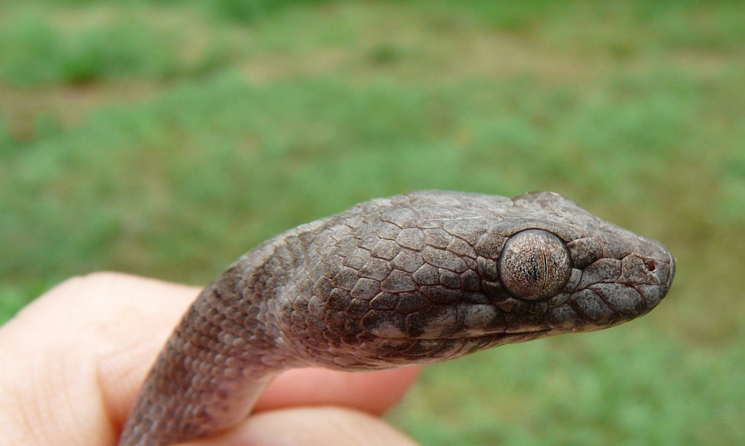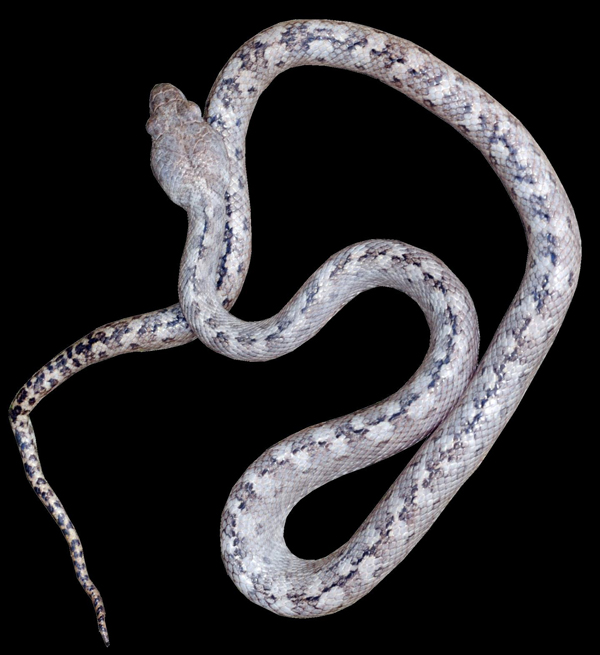Madagascarophis lolo, which means ghost in the Malagasy language, belongs to the Madagascarophis genus of the so-called cat-eyed snakes
A new snake species has been discovered in Ankarana National Park in northern Madagascar by researchers with the Louisiana State University Museum of Natural Science, American Museum of Natural History and the Université de Mahajunga in Madagascar . The snake, Madagascarophis lolo, which means ghost in the Malagasy language, belongs to the Madagascarophis genus of the so-called cat-eyed snakes, a group of colubrid snakes that are known to be mildly venomous. They are native to Madagascar.

SARA RUANE, LSU
Madagascarophis lolo's pupils are like that of a cat.
Madagascarophis lolo is gray in coloration with checkered pattern running down its back. Its pupils are like that of a cat. They are active in the evening when it is dark. Genetic analyses was done on Madagascarophis lolo, and its data were compared with other snakes. Researchers found the the closest relative was a snake named Madagascarophis fuchsi, which is known to inhabit an area 100 kilometers north of where Madagascarophis lolo was discovered. Madagascarophis lolo was found accidentally, with the researchers hiking 17 miles from their field site to the entrance of Ankarana Park. They were looking for a different species when they made the discovery.

SARA RUANE, LSU
Madagascarophis lolo is gray in coloration with checkered pattern running down its back.
"I think what's exciting and important about this work is even though the cat-eyed snakes could be considered one of the most common groups of snakes in Madagascar, there are still new species we don't know about because a lot of regions are hard to get to and poorly explored,” Sara Ruane, a post doctoral researcher at LSU Museum of Natural Science and lead author of the paper describing the new species, said in a statement. “If this commonly known, wide group of snakes harbors this hidden diversity, what else is out there that we don't know about?" Ruane said.



